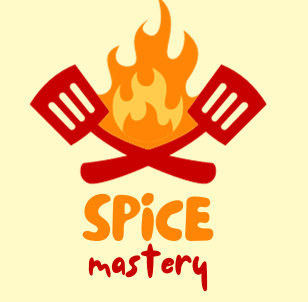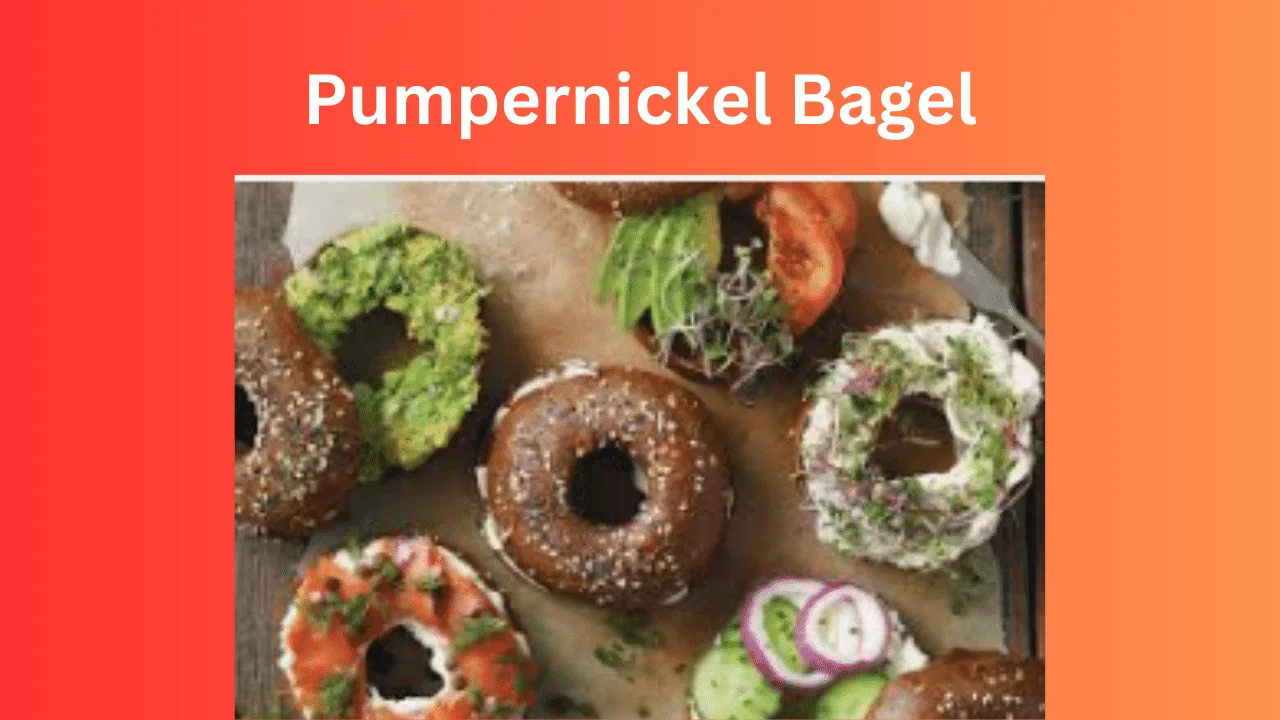Introduction
Pumpernickel bagel are a hearty substitute for ordinary bagels; they are dark in color and have a rich flavor that comes from rye that is coarsely ground. Rye flour and occasionally a hint of molasses or coffee give this kind of bagel its distinctive flavor and color, as well as a deep, slightly sweet undertone that sets it apart from the usual white or wheat bagels. Those who like a substantial breakfast or snack will love this one because of its chewy, dense texture. You can’t go wrong with a pumpernickel bagel with any number of toppings, including smoked salmon, robust cheeses, or even just a dollop of cream cheese.
What is a Pumpernickel Bagel?
Indulge in the culinary heritage of Germany with a pumpernickel bagel—more than just a breakfast item. In contrast to the usual wheat-based bagels, the primary ingredient, rye flour, gives them a rich, earthy flavor. These bagels provide a filling and substantial meal, especially when enriched with molasses for sweetness and coffee for an interesting depth of flavor. From opulent smoked salmon to plain, rich cream cheese, their chewy texture and density make them the perfect base for any topping.
Origins and Cultural Significance
Historical Background of Pumpernickel
The unique characteristics of the pumpernickel bagel are derived from the rich history of the pumpernickel bread, which originates in Germany. The distinctive dark color and dense texture were achieved by traditionally baking coarsely ground rye grain for long periods at low temperatures. The recipe originated in the Westphalia region during the medieval times. In honor of a distinct baking history, the bagel version takes these time-honored practices.
Pumpernickel in Modern Cuisine
Pumpernickel, once only made with traditional German bread, is now an essential ingredient in many different types of modern cuisines all over the world. Its adaptability and popularity in different cuisines have been on full display with its incorporation into bagel form, which has made it a beloved component of breakfast spreads in both cafes and homes.
Symbolism and Cultural Impact
Pumpernickel has symbolic significance in many cultures beyond its flavor and consistency. Because of its weighty, sustaining quality, it is commonly linked with durability and power in German culture. The bagel is a perfect example of the harmonious union of classical and contemporary cooking techniques, incorporating a touch of Europe into the regular American breakfast routine.
The Art of Baking Pumpernickel
Baking pumpernickel bagels is a bit of an art form that calls for patience and accuracy. A delicate balance of ingredients and patient baking time create the ideal combination of moist inside and crunchy outside. Artisan bakers’ skill and devotion in maintaining traditional methods while adapting them to modern tastes is on full display in this process.
Pumpernickel’s Place in Global Bakeries
You can find variations on this classic recipe for pumpernickel bagels at bakeries all over the globe these days. From the Big Apple to the Eiffel Tower, these bagels have won over gastronomes and regular folks alike.
Nutritional Profile and Health Benefits
Macronutrient Breakdown
Not only are pumpernickel bagels tasty, but they’re also good for you. Consuming these foods regularly will keep you energized all day long because they are rich in complex carbs and dietary fiber. For individuals seeking a lower-gluten alternative, the rye flour in pumpernickel is especially advantageous.
Dietary Fiber Content
The high fiber content of pumpernickel bagels is one of their distinguishing features. If you’re trying to control your blood sugar levels or manage diabetes, these bagels are a good choice because they’re high in dietary fiber, which is important for your digestive health.
Vitamins and Minerals
Pumpernickel bagels are a great source of iron, magnesium, and phosphorus, among other vitamins and minerals. These nutrients are essential for proper energy metabolism, strong bones, and healthy blood cells.
Antioxidant Properties
Because it contains lignans and other phytonutrients, rye flour has antioxidant qualities. These compounds are beneficial to health because they fight inflammation and oxidative stress.
Suitability for Various Diets
Pumpernickel bagels are a good alternative for people who are following particular diet plans. They can be modified to accommodate veganism, low-sodium, or high-fiber diets, making them a versatile option for a variety of dietary requirements.
Culinary Versatility and Pairings
Ideal Toppings
You can put a lot of different toppings on top of pumpernickel bagels. The dense texture and subtle sweetness of the bagel are brought out by rich, creamy spreads such as mascarpone or cream cheese. Savory toppings, like smoked salmon or sharp cheddar cheese, bring out the best in the rye’s rich flavors. For a more refreshing and creamy take on the bagel’s earthy tones, try avocado or hummus.
Best Pairings with Beverages
Drinks like robust black tea or strong coffee go wonderfully with pumpernickel bagels. These drinks lighten the heavy bagel and bring out its full flavor. Smoothies made with dark berries or cold-brew coffee are great options for individuals who like their beverages on the colder side.
Creating a Complete Meal
A well-rounded meal can include pumpernickel bagels, which aren’t limited to breakfast. Toasted pumpernickel bagels go well with tomato bisque, beef barley, or a fresh garden salad. Combining these flavors with their balanced nutritional profiles makes for a filling lunch or dinner.
Use in Various Cuisines
Pumpernickel bagels aren’t just for breakfast anymore; they’re a versatile ingredient in a wide range of international cuisines. For example, you can use them as a foundation for an open-faced sandwich in the Scandinavian style, topped with cucumber, dill, and pickled herring. Or, for a more Mediterranean twist, try topping a pumpernickel bagel with feta cheese, tomato slices, olive tapenade, and cucumber.
Baking and Storage Tips
Baking Guide
Careful attention to detail is required when baking the ideal pumpernickel bagel. To get the correct texture, the dough needs to be mixed with just the right amount of wheat flour and rye flour. Boiling the bagels before baking gives them their signature glossy finish and chewy texture, while a slow fermentation process helps develop the flavors fully.
Tips for Storing Pumpernickel Bagels
Pumpernickel bagels will keep for a few days at room temperature if stored in a paper bag or bread box. Wrapping them in plastic and putting them in the fridge or freezer will help them keep their quality for a longer period of time. To restore the crunchy outside and warm, chewy inside of day-old bagels, all you have to do is toast them.
Creative Ways to Use Leftover Bagels
There are a lot of ways to use leftover pumpernickel bagels. You can use them as croutons in salads and soups, or grind them into breadcrumbs to top baked casseroles or add to meatballs. Another tasty use for slightly stale bagels is to whip up a savory bread pudding with some mushrooms, cheese, and onions.
FAQs
Q: What makes pumpernickel bagels different from regular bagels?
Pumpernickel bagels are made with rye flour and typically feature ingredients like molasses and coffee, giving them a darker color and a unique, slightly sweet flavor.
Q: Are pumpernickel bagels healthier than white bagels?
Yes, they tend to be higher in fiber and contain more nutrients such as iron and antioxidants due to the rye flour.
Q: Can pumpernickel bagels be made gluten-free?
While traditional pumpernickel flour contains gluten, gluten-free versions can be made using gluten-free rye flavor or a blend of gluten-free flours.
Q: How long do pumpernickel bagels stay fresh?
They typically stay fresh for 2-3 days when stored properly at room temperature, and they can be frozen for up to 3 months.
Q: What cheese pairs well with pumpernickel bagels?
Strong cheeses like cheddar, gouda, or a tangy cream cheese complement the rich flavors of pumpernickel bagels well.
Conclusion
In conclusion, the pumpernickel bagel offers a unique culinary experience with its dense, flavorful profile, derived from coarse rye flour and a slow baking process. Its rich, earthy taste and dark color make it a distinctive choice among bagels, celebrated for its versatility and nutritional benefits. This specialty bagel continues to gain popularity for its robust flavor and satisfying texture.

Melody Roth, a seasoned blog writer with a passion for the delectable world of food, specializes in crafting mouth-watering articles on favorites like pizza and burgers. With years of experience under her belt, Melody serves up stories as tantalizing as the dishes she describes, making her an invaluable voice in the culinary blogging realm.

